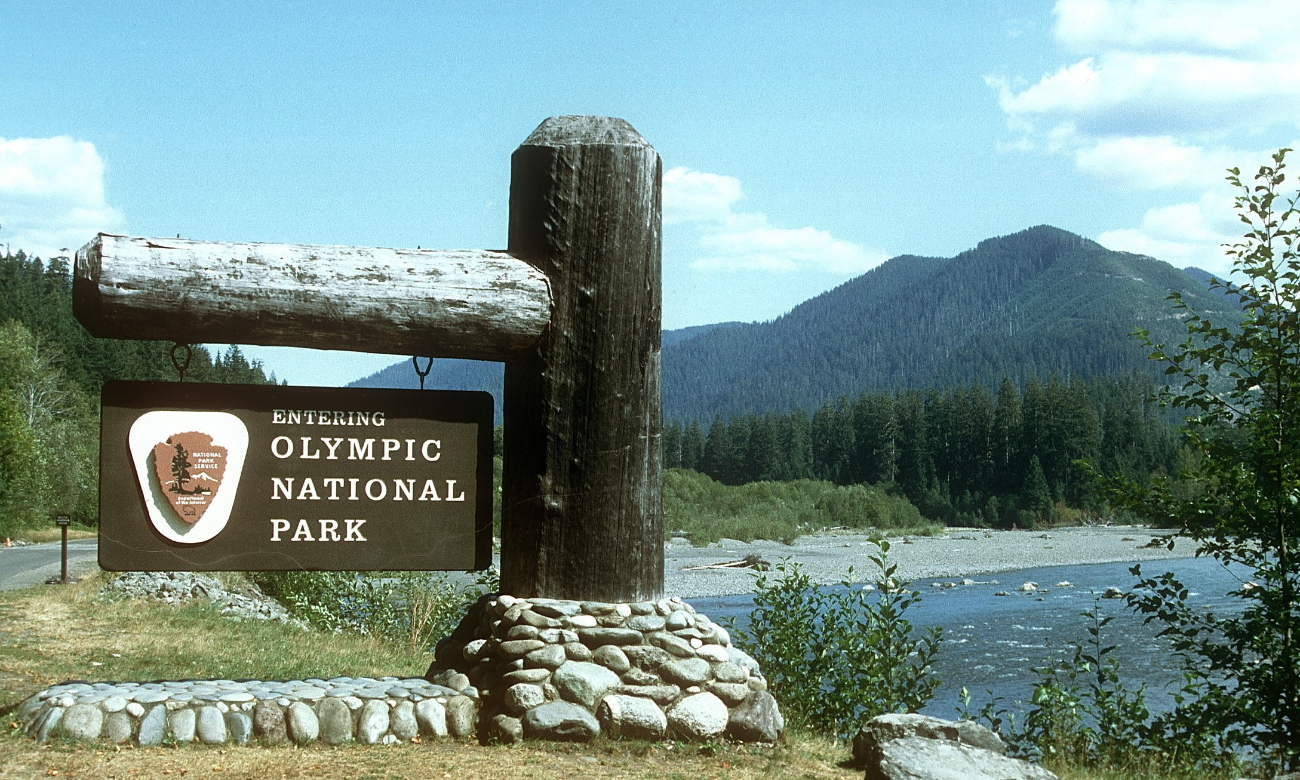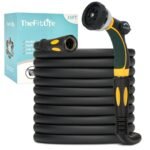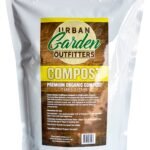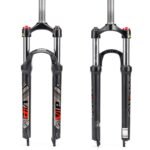Welcome to Olympic National Park, a stunning natural wonder located on the Olympic Peninsula in Washington State. Encompassing nearly one million acres, this park is a true gem of the Pacific Northwest, offering visitors a diverse range of ecosystems to explore, including glacier-capped mountains, old-growth temperate rainforests, and over 70 miles of wild coastline.
US National Parks including Olympic National Park
One of the most unique features of Olympic National Park is the incredible diversity of its landscapes. From the rugged peaks of Mount Olympus to the moss-covered forests of the Hoh Rainforest, there is no shortage of natural wonders to discover here. Visitors can hike through wildflower meadows, swim in crystal-clear lakes, or explore tide pools along the Pacific coast. And with over 600 miles of trails to choose from, hikers of all skill levels are sure to find the perfect route for their adventure.
Whether you’re a nature lover, a history buff, or simply looking for a peaceful escape from the hustle and bustle of everyday life, Olympic National Park has something for everyone. So pack your bags, grab your hiking boots, and come explore the breathtaking beauty of this world-renowned destination.
Location and History
Olympic National Park is a national park located in the state of Washington on the Olympic Peninsula. The park covers an area of 922,651 acres, making it one of the largest national parks in the lower 48 states. The park has four regions: the Pacific coastline, alpine areas, the west-side temperate rainforest, and the forests of the drier east side. The park is named after the Olympic Mountains, which are located in the center of the park.
The park has a rich history that dates back to the early 1900s when it was established as a national monument by President Theodore Roosevelt. The park was redesignated as a national park in 1938 by President Franklin Roosevelt. In 1976, the park was designated as a UNESCO International Biosphere Reserve, recognizing its unique and diverse ecosystems.
The park is home to a number of important cultural sites that reflect the history and traditions of the area’s indigenous peoples. The park’s First Peoples Time Immemorial exhibit provides visitors with an opportunity to learn about the culture, heritage, and traditions of the local communities that are closely linked to the park.
The park’s location on the Olympic Peninsula provides visitors with access to a wide range of outdoor activities, including hiking, camping, fishing, and wildlife viewing. Whether you are looking to explore the park’s rugged coastline, hike through its alpine meadows, or immerse yourself in its ancient rainforests, Olympic National Park has something for everyone.
Visitors’ Information
If you’re planning a trip to Olympic National Park, this section provides some essential information to help you get the most out of your visit.
Getting There
Olympic National Park is located in the northwest corner of Washington state, about 2.5 hours from Seattle by car. The nearest major airport is Seattle-Tacoma International Airport (SEA), which offers connections to many cities across the U.S. From there, you can rent a car or take a shuttle to the park.
If you’re driving to the park, there are several entrances to choose from, including the Port Angeles entrance, the Staircase entrance, and the Hoh Rain Forest entrance. The Port Angeles entrance is the most popular and offers the easiest access to many of the park’s main attractions.
Visitor Center
The Olympic National Park Visitor Center is located in Port Angeles and is open daily from 9 am to 5 pm. Here, you can get maps, brochures, and other information about the park, as well as buy souvenirs and book tours. The visitor center also has exhibits on the park’s history, geology, and wildlife, as well as a theater showing films about the park.
Map
A map of Olympic National Park is essential for planning your visit. You can download a free map from the National Park Service website or pick one up at the visitor center. The map shows all the park’s trails, campgrounds, and other attractions, as well as information on accessibility and facilities.
Weather
The weather in Olympic National Park can vary depending on the season and location. In general, summers are mild and dry, with temperatures ranging from the 60s to the 80s. Winters are wet and mild, with temperatures rarely dropping below freezing at lower elevations. However, the higher elevations can get snow and ice, so be prepared if you plan to visit those areas.
Visitors should also be aware of the potential for sudden changes in weather, especially in the mountains and along the coast. It’s a good idea to check the forecast before your visit and bring appropriate clothing and gear.
Overall, Olympic National Park is a beautiful and accessible destination for travelers of all abilities. The National Park Service offers many resources for wheelchair users, including accessible trails, campsites, and facilities. Whether you’re a first-time visitor or a seasoned traveler, there’s always something new to discover in this stunning park.
Hiking Trails
Olympic National Park is home to some of the most diverse and beautiful hiking trails in the United States. From the lush Hoh Rain Forest to the rugged coastline of Rialto Beach, there’s a trail for every type of hiker. Here are some of the top hiking trails to explore in Olympic National Park.
Hoh Rain Forest
The Hoh Rain Forest is a must-see destination for any visitor to Olympic National Park. The Hall of Mosses Trail and the Spruce Nature Trail are two easy hikes that showcase the beauty of the rainforest. The Hall of Mosses Trail is a 0.8-mile loop that takes you through a lush, green forest filled with towering trees covered in moss. The Spruce Nature Trail is a 1.2-mile loop that winds through the heart of the rainforest and offers views of the Hoh River.
Hurricane Ridge
If you’re looking for panoramic views of the Olympic Mountains, Hurricane Ridge is the place to go. The Hurricane Hill Trail is a 3.2-mile round trip hike that takes you to the top of Hurricane Ridge. The trail is steep in places but offers stunning views of Mount Olympus and the surrounding peaks.
Lake Crescent
Lake Crescent is one of the most beautiful spots in Olympic National Park. The Marymere Falls Trail is a 1.8-mile round trip hike that takes you to a stunning waterfall. The trail winds through a lush forest and offers views of Lake Crescent along the way.
Sol Duc
The Sol Duc area of Olympic National Park is known for its hot springs and beautiful waterfalls. The Sol Duc Falls Trail is a 1.6-mile round trip hike that takes you to a series of cascading waterfalls. The trail is easy and family-friendly, making it a great option for hikers of all ages.
Rialto Beach
Rialto Beach is one of the most popular spots in Olympic National Park. The beach is known for its rugged coastline and stunning views of the Pacific Ocean. The Hole-in-the-Wall Trail is a 1.3-mile round trip hike that takes you to a natural arch in the rocks. The trail is rocky in places but offers breathtaking views of the ocean.
Kalaloch
The Kalaloch area of Olympic National Park is known for its beautiful beaches and stunning sunsets. The Ruby Beach Trail is a 1.5-mile round trip hike that takes you to a picturesque beach. The trail is easy and offers views of sea stacks and driftwood along the way.
Mount Storm King
If you’re looking for a challenging hike with stunning views, the Mount Storm King Trail is the perfect choice. The trail is a 4.6-mile round trip hike that takes you to the top of Mount Storm King. The trail is steep and requires some scrambling, but the views of Lake Crescent and the surrounding mountains are well worth the effort.
Seven Lakes Basin
The Seven Lakes Basin Trail is a 19-mile loop that takes you through some of the most beautiful scenery in Olympic National Park. The trail winds through alpine meadows, past crystal-clear lakes, and offers stunning views of Mount Olympus. The trail is challenging but offers a once-in-a-lifetime experience for hikers.
Spruce Railroad Trail
The Spruce Railroad Trail is a 4.2-mile round trip hike that takes you along the shores of Lake Crescent. The trail offers stunning views of the lake and the surrounding mountains. The trail is easy and family-friendly, making it a great option for hikers of all ages.
Marymere Falls
The Marymere Falls Trail is a 1.8-mile round trip hike that takes you to a stunning waterfall. The trail winds through a lush forest and offers views of Lake Crescent along the way. The trail is easy and family-friendly, making it a great option for hikers of all ages.
Whether you’re a seasoned hiker or a beginner, Olympic National Park has a trail for you. From the lush Hoh Rain Forest to the rugged coastline of Rialto Beach, there’s no shortage of stunning scenery to explore. So grab your hiking boots and hit the trails for an unforgettable adventure in one of America’s most beautiful national parks.
Wildlife and Ecosystems
Olympic National Park is home to a diverse range of ecosystems, including forests, rainforests, mountains, coastline, and wilderness. These ecosystems are home to a wide variety of wildlife, including Roosevelt elk, sea otters, and a colorful array of wildflowers.
Forests
The forests of Olympic National Park are characterized by towering trees, including Sitka spruce and Western hemlock. These trees provide habitat for a variety of birds and mammals, including black bears, mountain lions, and Roosevelt elk. The forests are also home to a variety of plant species, including mosses and ferns.
Rain Forest
The Hoh Rain Forest is one of the most popular destinations in Olympic National Park. This temperate rainforest receives an average of 12 feet of rain per year, which supports a lush and vibrant ecosystem. Visitors to the Hoh River can see towering trees, waterfalls, and an abundance of wildlife.
Mountains
The mountains of Olympic National Park are characterized by dramatic peaks and glaciers. These peaks provide habitat for a variety of wildlife, including mountain goats and marmots. Visitors to the mountains can enjoy hiking, backpacking, and cross-country skiing.
Coastline
The coastline of Olympic National Park is home to a variety of marine mammals, including sea otters and seals. Visitors to the coastline can explore tide pools and driftwood-strewn beaches. The park is also home to the Makah and Quileute tribes, who have lived in the area for thousands of years.
Wilderness
Olympic National Park is home to vast wilderness areas, which provide habitat for a variety of wildlife. Visitors to the wilderness areas can enjoy backpacking, hiking, and camping. The park was designated a UNESCO World Heritage site in 1981.
Diversity
The diversity of ecosystems in Olympic National Park is unparalleled. From the temperate rainforests of the Hoh River to the rugged mountains and coastline, the park offers something for everyone. Visitors can explore the park’s diverse ecosystems and see a wide variety of wildlife.
Roosevelt Elk
Roosevelt elk are one of the most iconic species in Olympic National Park. These majestic animals can be seen throughout the park, foraging in the forests and meadows. Visitors should keep a safe distance from the elk, as they can be dangerous if approached too closely.
Sea Otters
Sea otters are another iconic species in Olympic National Park. These playful and adorable animals can be seen floating on their backs in the park’s coastal waters. Visitors should keep a safe distance from the sea otters, as they are a protected species.
Wildflower Meadow
Olympic National Park is home to a variety of wildflower meadows, which burst into color in the spring and summer months. Visitors can see a wide variety of wildflowers, including lupine, Indian paintbrush, and mountain daisies. The park’s wildflower meadows are a photographer’s dream.
Accommodation and Camping
If you’re planning a trip to Olympic National Park, you’ll need to find a place to stay. Luckily, there are plenty of options available, from lodges to campgrounds.
Lodges
There are several lodges located within Olympic National Park, including Lake Crescent Lodge, Sol Duc Hot Springs Resort, and Kalaloch Lodge. These lodges offer a range of accommodations, from cozy cabins to luxurious rooms.
Lake Crescent Lodge is located on the shores of Lake Crescent and offers a variety of accommodations, including rooms in the historic lodge, lakeside cabins, and Roosevelt Fireplace Cabins. The lodge also has a restaurant, a gift shop, and a boat rental service.
Sol Duc Hot Springs Resort is located in the heart of the park and offers a range of accommodations, including cabins, RV sites, and tent sites. The resort also has a hot springs pool, a restaurant, and a gift shop.
Kalaloch Lodge is located on a bluff overlooking the Pacific Ocean and offers a range of accommodations, including cabins and rooms in the historic lodge. The lodge also has a restaurant and a gift shop.
Camping
If you’re looking for a more rustic experience, there are several campgrounds located within Olympic National Park. These campgrounds offer a range of amenities, from basic campsites to full RV hookups.
The park-operated campgrounds that accept reservations in the summer are Fairholme, Kalaloch, Mora, and Hoh Rain Forest. Reservations can be made online at recreation.gov. Sol Duc Hot Springs Resort RV Park & Campground also offers reservations for the summer season online at recreation.gov.
If you prefer first-come, first-served camping, there are several options available, including Heart O’ the Hills, Deer Park, and Sol Duc Campground.
Picnic
If you’re just looking for a spot to enjoy a picnic, there are plenty of options available throughout the park. Many of the campgrounds have picnic areas available, as well as several day-use areas located throughout the park.
One popular spot for picnicking is Forks, a small town located just outside the park. Forks has several picnic areas available, as well as several restaurants and shops.
Things to Do
Olympic National Park is a haven for nature lovers and adventurers, offering a wide range of activities for visitors of all ages. Here are some of the top things to do in Olympic National Park:
Beaches
Olympic National Park is home to some of the most beautiful and pristine beaches in the country. From the rugged coastline of Second Beach to the stunning sea stacks of Ruby Beach, there’s a beach for everyone. Take a stroll along the shoreline, watch the waves crash against the rocks, or simply relax and soak up the sun.
Falls
The park is also home to some breathtaking waterfalls, including the popular Marymere Falls and Sol Duc Falls. These cascading falls are a must-see for any visitor to the park, and offer a great opportunity for some stunning photos.
Water Activities
With over 70 miles of coastline, Olympic National Park is a paradise for water lovers. Go kayaking, paddleboarding, or even surfing at one of the park’s many beaches. You can also take a boat tour of Lake Crescent or Lake Quinault, or go fishing in one of the park’s many rivers and streams.
Winter Sports
During the winter months, Olympic National Park transforms into a winter wonderland. Go skiing or snowboarding at Hurricane Ridge, or take a snowshoeing tour through the park’s snowy forests. The park also offers cross-country skiing and snowmobiling opportunities.
Nature Walks
One of the best ways to experience the park’s natural beauty is by taking a nature walk. The Hoh Rainforest and the Quinault Rainforest are two of the most popular areas for hiking and nature walks. Take a guided tour or explore on your own, and keep an eye out for the park’s diverse wildlife.
Swimming
Take a dip in the crystal clear waters of Lake Crescent or Lake Quinault, or cool off in one of the park’s many rivers and streams. Just be sure to check the park’s swimming advisories before taking a swim, as some areas may be unsafe due to currents or water quality.
Tide Pools
Explore the fascinating world of tide pools at Olympic National Park’s many beaches. These unique ecosystems are home to a variety of marine life, including starfish, anemones, and crabs. Just be sure to tread lightly and follow park guidelines to protect these fragile habitats.
Whether you’re looking for a relaxing day at the beach or an adrenaline-pumping adventure, Olympic National Park has something for everyone. Don’t miss out on the park’s many attractions, including the Kalaloch Lodge and Sol Duc Hot Springs.
Frequently Asked Questions
What are some popular trails in Olympic National Park?
Olympic National Park has a plethora of hiking trails for all levels of hikers. Some of the popular trails include:
Hurricane Hill Trail: This 3.2-mile round trip hike offers stunning views of the Olympic Mountains and the Strait of Juan de Fuca.
Hoh River Trail: This 17.3-mile round trip hike takes you through the temperate rainforest and along the Hoh River.
Sol Duc Falls Trail: This 1.6-mile round trip hike takes you to the beautiful Sol Duc Falls.
What lodging options are available near Olympic National Park?
There are several lodging options available near Olympic National Park, including hotels, motels, lodges, and cabins. Some popular options include:
Lake Crescent Lodge: This historic lodge is located on the shores of Lake Crescent and offers rooms, cabins, and cottages.
Kalaloch Lodge: This oceanfront lodge offers cabins and rooms with stunning views of the Pacific Ocean.
What are the camping options in Olympic National Park?
Olympic National Park has several campgrounds for visitors to choose from. Some popular options include:
Kalaloch Campground: This oceanfront campground offers stunning views of the Pacific Ocean and is open year-round.
Sol Duc Campground: This campground is located in the heart of the park and offers easy access to the Sol Duc Hot Springs.
Where is the visitor center located in Olympic National Park?
The Olympic National Park Visitor Center is located at 3002 Mount Angeles Road, Port Angeles, WA 98362.
What other national parks are in Washington?
Washington is home to three other national parks:
- Mount Rainier National Park
- North Cascades National Park
- Whitman Mission National Historic Site
What makes Olympic National Park famous?
Olympic National Park is famous for its diverse ecosystems, including temperate rainforests, alpine meadows, and rugged coastlines. The park is also home to several iconic landmarks, including Hurricane Ridge, Lake Crescent, and the Hoh Rainforest.

Meet Kevin Goodell, your outdoor adventure coach! With a passion for nature ignited in childhood, Kevin brings a wealth of experience and expertise to simplify tough outdoor skills. As a U.S. Army veteran and former Sergeant, he has honed his leadership and teamwork abilities while developing a deep love for the great outdoors.
Kevin’s dedication to outdoor activities spans biking, birdwatching, national park trips, and archery/golf. With his friendly and approachable demeanor, he is committed to guiding individuals of all ages and skill levels towards unforgettable outdoor experiences.
Harnessing his extensive knowledge and personal achievements, Kevin is your go-to resource for learning and enjoying various outdoor pursuits. Whether you seek thrilling adventures or serene nature escapes, Kevin’s professional yet friendly approach will ensure an engaging and informative experience. Embark on your next outdoor adventure with Kevin Goodell and embrace the beauty of nature like never before.






